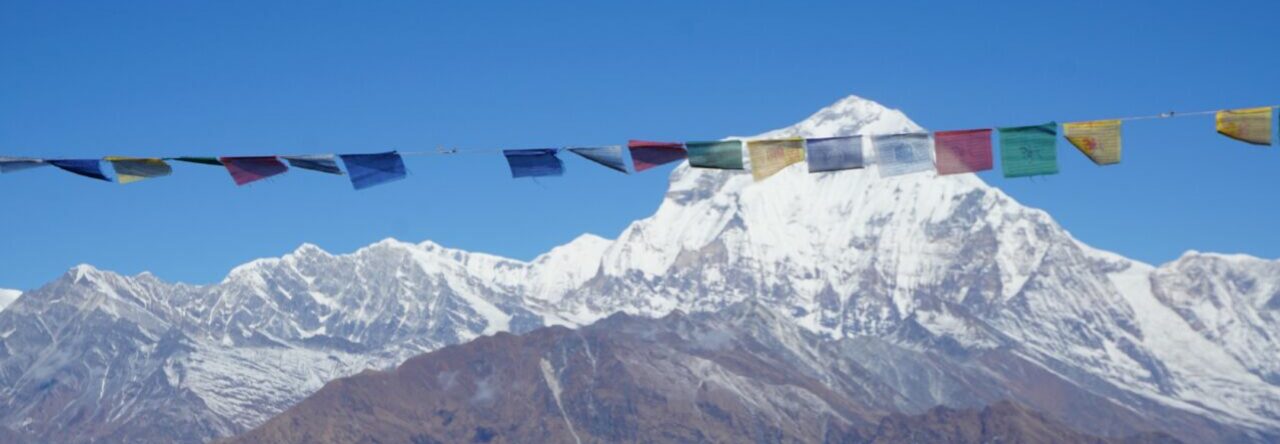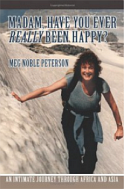I’m still hoping for news from inside Myanmar, or Burma, which is what the exiles call it. There are fewer and fewer articles being written, due to a total news blackout in the country. No internet, no newspapers, no cell phones allowed, and, of course, no emails. I’m torn between wanting to urge people not to go there as a statement against the junta, and the need for people from the outside to get to the struggling Burmese and let them know they haven’t been abandoned. This is why I waited for ten years before going there. But I made sure that I only stayed at small guest houses and bought from independent merchants—not wanting to give one cent to the government. During one of my recent hikes I talked with a woman who works in human rights at the UN. She felt that this time the world would take notice because of the slaughter of monks—a fact that further enraged the exiles. This is not students and ordinary citizens, but the sacred Buddhist tradition that is being attacked.
After writing these words I opened up the NYTimes and found an article about Laura Bush and how she, not the president, picked up the phone to call the UN Secretary General, Ban Ki-moon to protest the crackdown on the pro-democracy demonstrators in Burma. She seems to be keeping up the pressure, having met with both Senators Dianne Feinstein and Kay Bailey Hutchison. This is good news. According to the report in the Times today, Oct. 15 (p.1, p.A9), “The First Lady is becoming much more public, and more proscriptive. She’s not just following, she’s leading.”
Another less positive, but very realistic view of what is happening in Burma comes from The Wall Street Journal weekend edition, Oct. 13-14. The front page story, THE BURMA CONNECTION, continues on p A6, DESPERATE BURMESE LABOR IN THAILAND. It poses the moral dilemma of those companies just over the border in Mae Sot, Thailand, who hire impoverished women to labor in their brassiere factory for as little as $3 take-home pay a day (the lingerie is sold in the U.S. under names like Maidenform and Vanity Fair). They come from the border town of Myawaddy, Myanmar, and are so desperate for any amount of money that they do jobs few others would want to do. “They have no food, no income, no nothing.” I recommend this article to all of you who want to know more about the background of this formerly rich, prosperous country now facing such appalling degradation.
In a lighter vein, there was a moment last week when I thought autumn was upon us. I could breathe, again, and put on long sleeves and a polar fleece, but, alas, by midweek I was back in shorts. Is this global warming, or wot? Then, suddenly, the weekend arrived, the wind kicked up, temperatures plummeted and there was a rush to bring in the house plants, put up the storms, and remove the air conditioners. Hooray, we’re back on track and Fall has arrived. I’m grateful. Each season brings with it such beauty and such renewal. And, I hope, will get the creative juices flowing.
Our first concert of the season was a smash hit at the Plainfield Symphony, the premier community orchestra of New Jersey. I say this in all modesty, because it’s true. We had a guest conductor, Cesar Ivan Lara, from Venezuela and all the music was from south of the border. These rhythms are new to most of us ordinary Americans and fascinating as well. And difficult! We played selections from Alberto Ginastera, Antonio Estevez, and Ricardo Teruel (Argentina), Heitor Villa-Lobos (Brazil), and Jose Pablo Moncayo and Antonio Marquez (Mexico). You never heard such percussion! The tympanist was almost dancing, as were some members of the audience. The brass and winds nearly blew the roof off Crescent Avenue church, and the applause was thunderous. Did I have a good time? You bet.
Another top flight musical experience was a superb concert by the Madison String Quarter, in which exciting new pieces by Charles Griffin and Arcangel Castillo were played alongside Dvorak’s popular “American” string quartet. This is a quartet to watch. We’re lucky to have them in New Jersey.
The opera and theater season is in full swing. I was able to get tickets for Lucia di Lamamoor with the fabulous French soprano, Natalie Dessay. Lest you think me extravagant, I was able to find a $15 ticket in the last row, which, by the way, has the best acoustics in my opinion, and, with my new opera glasses, puts me right on stage. You don’t even need oxygen. Can hardly wait to see the famed mad scene, which I glimpsed on Charlie Rose.
I thought I had gotten my theater addiction in check until I hooked up with Phyllis Bitow, a percussionist in our orchestra, who is a fellow addict and even drives to the city after work, sparing me those late night returns by train. We have quite a coterie of enthusiasts, including Paul Sharar, Carol Goodman, Silvia Lowe, and Suzanne Roghanchi. The company is swelling, so we may have to get an SUV. Oops, that would NOT be environmentally sound, so we’ll just use the roof rack.
Of the many plays we’ve seen on our Audience Extras, Play-by-Play, and TDF accounts, I recommend: The Overwhelming (Roundabout), Sive (Irish Rep), Mercy Thieves (crazy play from Australia with excellent acting and dialogue), and American Sligo (Rattlesnake). Coming up is The Ritz, Mauritius, and Is He Dead? By Mark Twain, starring my neighbor, Norbert Leo Butz.
For the last two weeks I’ve been hiking in the woods of Harriman Park, a gorgeous area in New York State about an hour from my home. The hikes range from five to twelve miles and are filled with enthusiastic nature lovers from Jersey and the New York metropolitan area. Two weeks ago I was privileged to be a guest at Thendara, formerly the Green Mountain Club of Vermont, owned now by a group of Harriman hikers who use the two large cabins and a section of Lake Tiorati as their headquarters and overnight hangout. Three of us hiked in the woods, stopping at natural old caves used by early settlers, and exploring two of the iron mines that provided armaments in the 18th and 19th centuries. Only the steep sides of the mines and deep, water-filled holes were left. Orange and black striations on the walls, and holes where dynamite was used, were all that remained of these massive pits. A few stone foundations marked the houses of those who worked the mines.
The conversation turned to the history of the region. I had not known of Tom Brown, Jr, who has a Tracker School in the Pine Barrens, and wrote a book about the famous Native American, “stalking wolf,” entitled Grandfather. It’s a true story about this remarkable Native American and his lifelong search for peace and truth in nature. Tom has written several other books, including his own emotional journey, The Quest.
At the end of our hike we were so warm that we swam in the lake at sunset…an amazing experience in October! I’m certain that this was my final swim of the season.
I’m remiss for having left out an important visit I had with the other Exley family on Mirror Lake this past August. I had mentioned Chris, but also enjoyed a visit with his older brother, Paul Exley, wife Lori, and children Charlton, 13, and Kile, 11. Also, Beth’s husband, and the grandfather in residence, Jim Exley, was with us. It’s always great to dip into the lives of my outstanding second cousins and their families every summer.
Lori just wrote and asked me if I’d be interested in coming to her book club, if they selected my book to read. This reminded me to mention that I do, in fact, visit book clubs in the area and discuss my book at their meeting. I have a Reader’s Guide that is used during the sessions. (You can see it on the Reviews page of my website in the lower righthand corner.) So if any of you readers are members of book clubs and wish to use my book, I’ll be glad to attend your meeting, or, if you’re too far away, answer questions on a conference call as I’ve done in the past.

